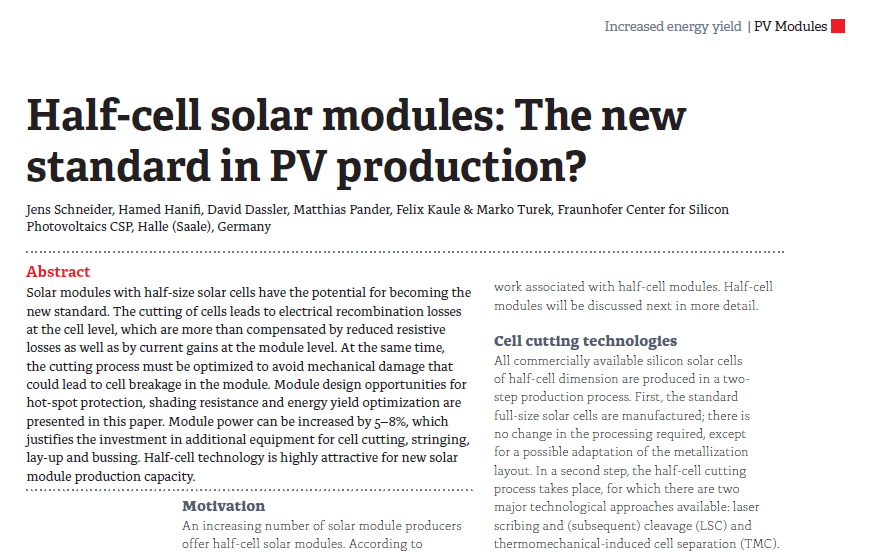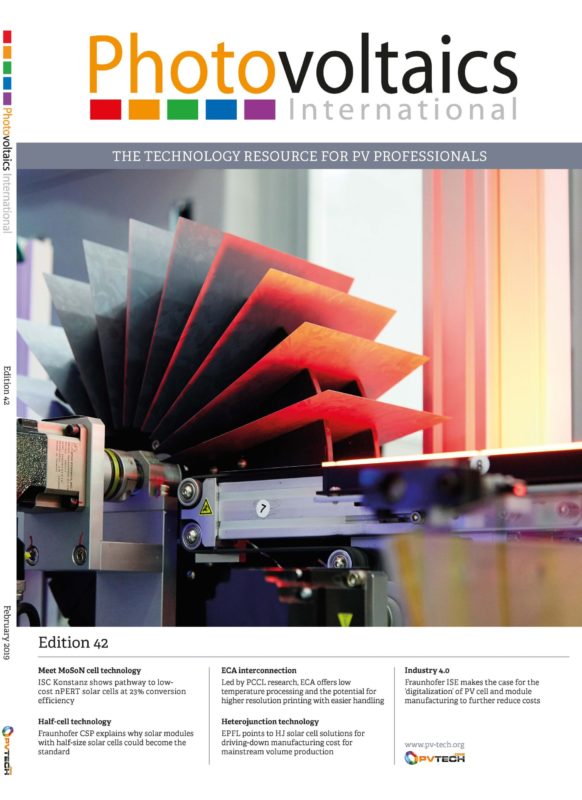By Jens Schneider; Hamed Hani; David Dassler; Matthias Pander; Felix Kaule; Marko Turek
Solar modules with half-size solar cells have the potential for becoming the new standard. The cutting of cells leads to electrical recombination losses at the cell level, which are more than compensated by reduced resistive losses as well as by current gains at the module level. At the same time, the cutting process must be optimized to avoid mechanical damage that could lead to cell breakage in the module. Module design opportunities for hot-spot protection, shading resistance and energy yield optimization are presented in this paper. Module power can be increased by 5–8%, which justifies the investment in additional equipment for cell cutting, stringing, lay-up and bussing. Half-cell technology is highly attractive for new solar module production capacity.


